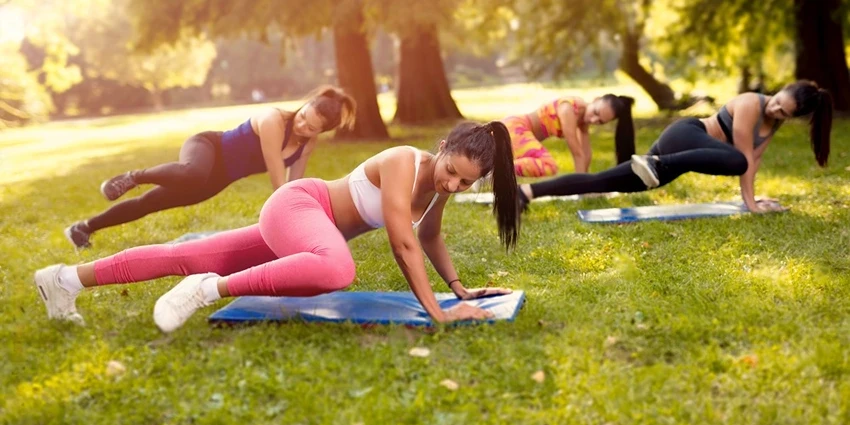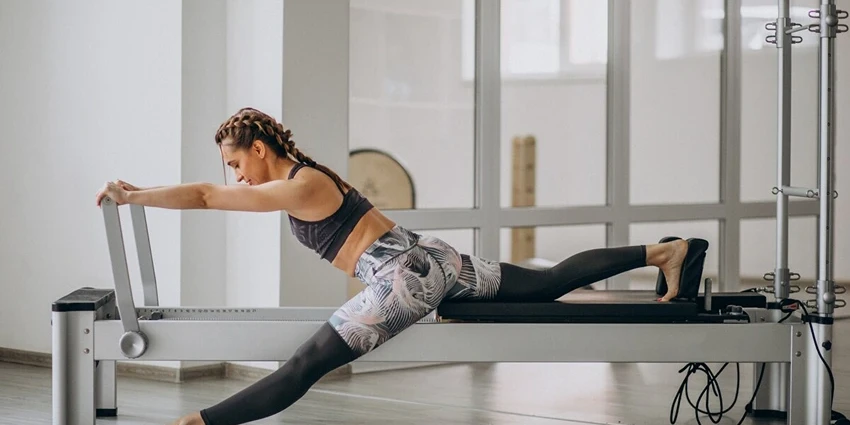Embarking on your fitness journey can be an exhilarating yet daunting experience. At Rac Women, we believe in empowering you with knowledge, confidence, and a community that supports your wellness goals. Whether you’re taking your first step into fitness or rekindling your passion for an active lifestyle, our comprehensive guide is here to navigate you through the essentials of beginner fitness plans.
In This Article
Getting the Green Light: Health Precautions

Before diving into any fitness regimen, it’s crucial to consult with a healthcare provider. This step ensures your body is ready for new physical challenges and identifies any potential risks.
Why Medical Clearance Matters
- Identifies underlying health conditions: Unrevealed issues like heart conditions or asthma.
- Medication considerations: Some prescriptions can influence your workout capacity.
- Injury prevention: Learn about any limitations to avoid injuries.
Table: Importance of Pre-Workout Medical Consultation
| Consideration | Description | Impact |
|---|---|---|
| Health History | Past illnesses, surgeries, or chronic conditions. | Informs suitable exercise types and intensities. |
| Medications | Prescriptions that may affect heart rate, blood pressure, or energy levels. | Guides safe workout practices. |
| Physical Limitations | Existing musculoskeletal issues or other limitations. | Helps tailor workouts to what’s safe and effective. |
Understanding the need for a pre-workout medical check can prevent unforeseen complications and set you up for success.
Setting the Stage: Pre-Workout Preparations
A successful fitness journey isn’t just about the exercises. It’s about preparing your environment, your mind, and your schedule.

Essential Workout Equipment
Starting your fitness journey doesn’t require expensive equipment. Here’s a simple starter pack for home workouts:
- Yoga mat: Provides cushioning and support for floor exercises.
- Resistance bands: Enhances strength training without heavy weights.
- Supportive footwear: Protects your joints during high-impact activities.
Table: Basic Home Workout Equipment and Their Uses
| Equipment | Use | Benefit |
|---|---|---|
| Yoga Mat | Floor exercises like yoga, pilates, or stretching. | Prevents slipping, adds comfort. |
| Resistance Bands | Adds resistance to exercises like squats, lunges, or arm curls. | Builds strength, enhances flexibility. |
| Dumbbells | Weighted exercises for various muscle groups. | Improves muscle tone, boosts metabolism. |
Understanding Workout Basics: Terms and Concepts
Grasping basic workout terminology will not only make following fitness plans easier but also help in setting realistic goals.
Workout Lingo 101
- Reps: Short for repetitions, refers to the number of times you perform an exercise.
- Sets: The number of cycles of reps you complete.
- Cardio: Activities that raise your heart rate, like jogging, cycling, or dancing.
Table: Common Workout Terms Explained
| Term | Definition | Example |
|---|---|---|
| Reps | The number of times an exercise is performed. | Doing 10 squats. |
| Sets | A group of consecutive repetitions. | Completing 3 sets of 10 squats. |
| Cardio | Aerobic exercise that increases heart rate. | Running, swimming, cycling. |
Tracking Progress: Measurements and Journaling
Documenting your journey is motivational and can be done through various methods, from journaling to digital apps.

The Power of a Progress Journal
- Visual evidence of improvement: Seeing changes in numbers can be incredibly motivating.
- Accountability: Regularly recording workouts encourages consistency.
- Identifying patterns: Helps recognize what’s working and what’s not.
Table: Ways to Track Fitness Progress
| Method | Description | Benefit |
|---|---|---|
| Workout Journal | Documenting exercise types, sets, reps, and intensity. | Helps with consistency and monitoring improvements. |
| Fitness Apps | Using digital tools to track workouts, nutrition, and more. | Convenient, often with extra features like reminders or social communities. |
| Body Measurements | Regularly measuring areas like waist, hips, arms, etc. | Provides a more holistic view of physical changes beyond weight. |
Your First Exercise Routine: A Simple Guide
Starting a fitness routine can be overwhelming. That’s why we advocate beginning with basic, low-impact exercises and gradually building intensity.
Beginner-Friendly Exercises
- Walking: It’s accessible, requires no equipment, and is easy on the joints.
- Body-weight exercises: Think push-ups, squats, and lunges.
- Stretching: Essential for flexibility and preventing injury.
Table: Sample Beginner Exercise Routine
| Day | Workout | Total Time |
|---|---|---|
| 1 | Brisk Walking | 30 mins |
| 2 | Body-Weight Circuit (squats, push-ups, etc.) | 20 mins |
| 3 | Stretching/Yoga | 30 mins |
| 4 | Rest | – |
| 5 | Repeat | – |
For a more structured plan, this 30-day quick-start exercise guide is a fantastic resource.
Introduction to At-Home Workouts
At-home workouts can be just as effective as gym sessions and are often more convenient for those juggling busy schedules or feeling intimidated by gym environments.

The Convenience of Home Fitness
- Flexibility: Work out any time without commuting to a gym.
- Privacy: No worries about feeling judged or self-conscious.
- Cost-effective: Avoid expensive gym memberships and fancy equipment.
Table: Pros and Cons of At-Home Workouts
| Pros | Cons |
|---|---|
| Convenience | Easy to skip sessions |
| Privacy | Limited equipment |
| No commute | Potential distractions |
For more insights on maximizing your at-home workouts, explore these strategies.
Safety First: Pre-Workout Precautions
Safety is paramount, especially when working out alone. It’s essential to listen to your body and understand your limits.
Tips for a Safe Home Workout
- Warm-up and cool down: Essential for preparing your muscles and preventing injury.
- Stay hydrated: Keep water accessible to avoid dehydration.
- Create space: Ensure you have enough room to move freely and safely.
Table: Home Workout Safety Checklist
| Checklist Item | Why It’s Important |
|---|---|
| Adequate space | Prevents accidents and injuries |
| Hydration | Maintains energy levels and joint lubrication |
| Knowledge of form | Reduces risk of strains and sprains |
This article provides more in-depth safety tips for your home workouts.
Setting Achievable Fitness Goals
Realistic goal-setting is a cornerstone of fitness success. Goals should challenge you, but also be attainable based on your current fitness level and lifestyle.
The SMART Way to Fitness
- Specific: Instead of “get fit,” aim for “walk 30 minutes a day.”
- Measurable: Track progress in a journal or app.
- Achievable: Set goals within your physical and temporal means.
- Relevant: Align goals with your lifestyle and interests.
- Time-bound: Set deadlines to encourage accountability.
Table: Examples of SMART Fitness Goals
| Unhelpful Goal | SMART Goal |
|---|---|
| Get in shape | Do 30 minutes of cardio 3 times a week |
| Lose weight | Lose 5 pounds in 2 months by cutting soda |
| Build muscle | Add 5 lbs to my bench press every two weeks |
For more on setting SMART fitness goals, this guide is a great resource.

The Ideal Workout Length for Beginners
A common misconception is that workouts need to be long to be effective. In reality, even short sessions can yield significant health benefits.
Quality Over Quantity
- Consistency is key: Regular short workouts can be more beneficial than infrequent longer sessions.
- Intensity matters: A short, high-intensity workout can be very effective.
- Listen to your body: Don’t force long sessions if you’re not feeling up to it.
Table: Recommended Workout Durations by Type
| Workout Type | Ideal Duration | Frequency |
|---|---|---|
| Cardio | 20-30 minutes | 3-5 times a week |
| Strength Training | 30-45 minutes | 2-3 times a week |
| Flexibility | 15-20 minutes | Daily |
For those pressed for time, these short workouts are both effective and efficient.
Basic Beginner Home Workouts
Starting doesn’t need to be complicated. Many effective exercises require no equipment at all.
Exercises That Don’t Require a Gym
- Bodyweight exercises: Push-ups, sit-ups, squats, and lunges.
- Cardio: Jumping jacks, mountain climbers, or burpees.
- Balance and flexibility: Yoga and dynamic stretching.
Table: No-Equipment Home Exercises
| Exercise | Category | Benefits |
|---|---|---|
| Push-ups | Strength | Builds upper body and core strength |
| Squats | Strength | Strengthens legs and glutes |
| Jumping jacks | Cardio | Increases heart rate, improves coordination |
For a more structured approach, these beginner workouts can help establish a routine.
Expanding Your Exercise Routine
As you progress, you’ll want to expand your routine to keep challenging yourself and continue improving.
Taking It to the Next Level
- Join a local or online fitness community: For support and accountability.
- Try new workout styles: Like HIIT, Pilates, or Zumba.
- Consider a personal trainer: For personalized guidance and motivation.
Table: Ways to Enhance Your Fitness Routine
| Method | Benefits |
|---|---|
| Trying new workouts | Prevents boredom, targets different muscles |
| Joining a community | Provides support, accountability, and motivation |
| Hiring a trainer | Offers personalized guidance, ensures proper form |
Ellen Crandall
Meet Ellen, your fitness compass in the world of athletics, training, and gym culture. With a commitment to well-being and a penchant for all things workout-related, Ellen is here to guide you on your journey to a healthier, fitter you. Join the fitness revolution, led by Ellen, and embrace the power of an active lifestyle.




